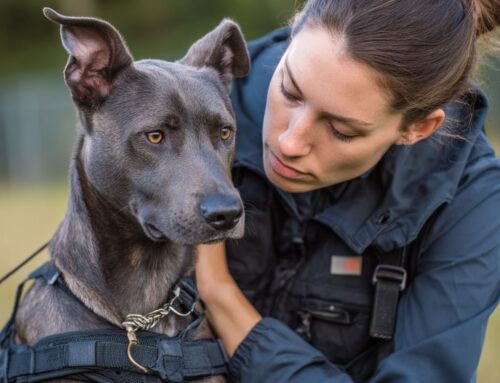It’s that season once again when pet owners need to stay diligent about foxtails. From late spring during the month of May and the early parts of summer are the prime times for these annual grasses to appear, particularly in the State of California. While this wild grass offers an attractive backdrop in nature, it can wreak havoc on a dog’s health when the plant turns brown, and foxtail clusters break away.
The best way to avoid foxtails is to stay clear of them.
However, if a dog has walked through these grasses, the barbs on the outer portion of a foxtail may attach itself to their fur. Frequently, foxtails fasten to the underside of the paws and between the toes. Other places foxtails can appear may include:
- Eyes
- Ears
- Nose
- Mouth
Following a walk or when your dog comes back journeying from the outdoors, it’s important to check them from head to tail regularly. Be on the lookout for foxtails and remove them immediately when spotted. If ignored, foxtails have the ability to penetrate into a dog’s skin and travel throughout their system creating infection and illness.
Being that there are familiar places foxtails adhere to on a dog, here are some pet owner tips to remember in the event a dog begins to display unusual symptoms.
Nose Warning Signs:
If a dog does not have a history of sneezing, but suddenly starts sneezing forcefully, do keep a close eye on your pet. Other foxtail warnings may include a dog pawing its nose or rubbing it on the floor. Discharge (sometimes bloody) may also occur.
Eye Warning Signs:
A dog that has a foxtail embedded in its eye may encounter ongoing tearing which is sometimes accompanied by an unusual discharge. Squinting can also be present.
Ear Warning Signs:
A foxtail which travels into a dog’s ear can create both discomfort and pain. Dogs may have the following symptomatic response from this foreign body such as:
- Frequent head shaking
- Constant tilting of the head
- Head shaking or tilt with a whimper or cry
- Unusual walk with slight head tilt
Mouth Warning Signs:
A dog that has orally ingested a foxtail will have visible symptoms. One or more of these will consist of the following:
- Coughing
- Gagging
- Vomiting
- Sudden yearning to eat grass
And more.
A pet parent knows their dog better than anyone. If their animal begins to present symptoms that are unusual, then do seek the professional help of a veterinarian particularly if a dog has been in an area with foxtails. Timing is everything so do not delay a visit if a foxtail is ever suspected.










